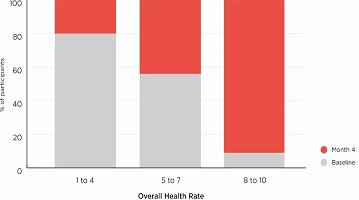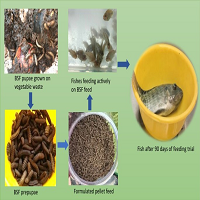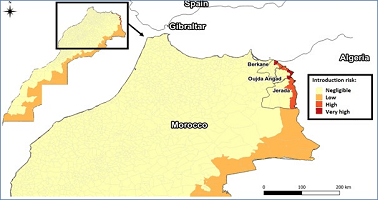INTRODUCTION
In the recent years, intravenous anesthetics are increasingly being used as alternatives to inhalation anesthetic agents. Inhalant anesthetics require a costly anesthetic machine, rather than the exposure of the operating-room personnel to pollution.1,2,3 The intravenous agents has a lesser chance of causing cardiovascular and respiratory depression than the inhalation anesthetics.
Total intravenous anesthesia (TIVA) is a useful method of anesthesia in the field; as it does not require specialized equipment or an oxygen delivery system.4 It is used for surgical procedures that involve the upper airway when the placement of an endotracheal tube interferes with surgery as well as for bronchoscopic examination.5
For longer periods of anesthesia, intravenous anesthetics may be given by intermittent injections or by continuous infusion. The intermittent bolus administration can result in high peak plasma levels and an excessive depth of anesthesia, alternating with periods of inadequate anesthesia, while infusion technique provides a continuous steady-state concentration of the drug, producing a more stable plane of anesthesia.3,6,7
Surgical intervention requires an ideal anesthetic, with sufficient analgesic and muscle relaxant effects. Such characteristics may be difficult to be present in a sole agent. So, a combination of drugs is used, which is referred to as balanced anesthesia.8 Use of a combination of anesthetic agents with different mechanisms of action, has the benefit of using lower doses of individual agents that produce sufficient anesthesia, while reducing the possibility of overdosage risks.9
Ketamine is an N-methyl, D-aspartate (NMDA) receptor antagonist. It has a cataleptic, analgesic, and anesthetic action, but no hypnotic properties. Its effect on poor muscle relaxation can be improved by co-administration with sedatives such as xylazine. By its stimulatory effect on the sympathetic nervous system, ketamine counteracts the depressant effects of other anesthetic agents during anesthesia. Xylazine is a α2-adrenoceptor agonist, with analgesic, sedative, and muscle relaxant effects.3,10
Several mixtures of different anesthetic regimens were described in literatures for providing TIVA; however, studies that define doses of ketamine-xylazine for TIVA are lacking.
So, the aim of the present study was to define the optimal ketamine-xylazine dosage for TIVA by constant rate infusion (CRI) in dogs, especially emphasizing on its effects on anesthetic and physiological indices.
MATERIALS AND METHODS
Ethics Statement
The present study was approved by The National Ethical Committee of the Faculty of Veterinary Medicine, Assuit University, Assuit, Egypt. The animals were selected in minimum numbers to obtain valid results.11
Experimental Animals
The present study was conducted on twenty clinically healthy adult mongrel dogs, of either sex (ten males and ten, non-pregnant, non-lactating bitches). They were 2 to 3 years old and weighed 12 to 14 kg in body weight. The animals were housed in standard individual cages with food and water ad libitum.
Anesthetic Protocols
Many different dosages from the two anesthetic regimens, ketamine-xylazine, were used in induction and maintenance of anesthesia by CRI in dogs, till an optimal dosage was achieved for an effective, deep anesthesia without any complications or side effects. Dogs were randomly assigned into four treatment protocols (A, B, C, and D), of five dogs each (n=5), based on the dosages of ketamine-xylazine mixture, used for induction and maintenance of anesthesia in each protocol. Dogs in each protocol were evaluated individually, each in a separate day (Table 1).
| Table 1: The Anesthetic Protocols of Ketamine-Xylazine TIVA in Dogs. |
|
Protocol
|
No. of Dogs |
Drugs |
Induction dosage
(mg/kg, IV) |
Maintenance dosage
(mg/kg/hour)
|
|
A
|
5 |
Ketamine 5% |
0.5 |
0.6 |
|
Xylazine 2%
|
0.25
|
0.3
|
|
B
|
5 |
Ketamine 5% |
5 |
10 |
| Xylazine 2% |
0.5 |
1
|
|
C
|
5 |
Ketamine 5% |
2 |
5 |
| Xylazine 2% |
0.5 |
0.5
|
|
D
|
5 |
Ketamine 5% |
2 |
10 |
| Xylazine 2% |
1
|
1
|
Drugs
Drugs used were ketamine 5% (50 mg/ml) injection (Sigma-tec Pharmaceutical Industries, SAE, Egypt), and xylazine 2% (20 mg/ml) injection (ADWIA Co. SAE, Egypt).
Anesthetic Technique
Food but not water was withheld from dogs for 12 hours (h) before each treatment protocol. Animals were weighed prior to the dosage calculation. The cephalic vein was catheterized by an 18-gauge, IV catheter. Anesthesia was induced by administration of ketamine-xylazine, mixed in the same syringe, at doses in (mg/kg body weight, IV) based on each protocol. The ketamine-xylazine dosages (ml) for CRI were dissolved in normal saline (0.9% NaCl) as a diluent to a maximum volume of 100 ml, administered using a volumetric infusion pump, P-600 (Atom Medical Corp, Japan). CRI commenced immediately after induction of the anesthesia and was maintained for 60 minutes (min) in all protocols.
Dosage Calculation for CRI
The following calculations were made according to Luisito12:
1. Fluid infusion rate (ml kg-1 h-1)=maximum volume (100 ml)/body weight (kg)/desired hours of procedure (1 h).
2. Ketamine CRI dose=Infusion rate of ketamine (mg kg-1 h-1)÷fluid infusion rate (ml kg-1 h-1)×maximum volume (100 ml).
3. Xylazine CRI dose=Infusion rate of xylazine (mg kg-1 h-1)÷fluid infusion rate (ml kg-1 h-1)×maximum volume (100 ml).
Anesthetic Indices
The following parameters were recorded in each case:
– Onset of anesthesia (sec): Time elapsed from the beginning of induction of anesthesia till the disappearance of pedal reflex.
– Recovery time (min): Time elapsed from the disconnection of the infusion set and the ability of the animal to stand.
– Quality of induction and recovery (smooth or there were any adverse reactions).
– Pedal reflex: By clamping the toe web with a hemostat. Recorded every two second from the end of induction till the onset of anesthesia, and subsequently every ten minutes till the disconnection of the infusion set. It was graded in a scale of (0-3), according to Njoku13 (Table 2).
| Table 2: The Scale of the Pedal Reflex in Dogs. |
|
Scale
|
Pedal Reflex |
|
0
|
No limb withdrawal at the lock of the 3rd ratchet of a hemostat clamped on the toe web |
|
1
|
Limb withdrawal at the lock of the 3rd ratchet |
|
2
|
Limb withdrawal at the lock of the 2nd ratchet |
|
3
|
Limb withdrawal at the lock of the 1st ratchet |
– Palpebral reflex: Recorded every ten minutes from the end of induction till the disconnection of the infusion set. It was graded in a scale of (1-4), according to Jena et al14 (Table 3).
| Table 3: The Scale of the Palpebral Reflex in Dogs. |
| Scale |
Palpebral Reflex |
|
1
|
No change in reflex |
|
2
|
Moderate reflex |
|
3
|
Sluggish reflex |
|
4
|
Absence of reflex |
– Side effects.
PHYSIOLOGICAL INDICES
The Body temperature (BT, oC), heart rate (HR, beats/min), and respiratory rate (RR, breaths/min) were measured (using a digital thermometer, stethoscope, and visual observation of excursions of the thorax during respiration, respectively). They were measured at 0 min before induction of anesthesia; to ascertain the baseline values and subsequently at 5, 10, 15, 30, 45, and 60 min following the induction of anesthesia.
Statistical analysis
The values are expressed by Mean+SE. The data was analyzed by one way ANOVA using SPSS 16.00 Software (SPSS Inc., Chicago, IL, USA); significance was designated as p≤0.05. Means were compared by Tukey post-hoc test when a significant difference was detected.
RESULTS
Onset of Anesthesia
Protocol D achieved the shortest onset time of anesthesia, followed by protocols B, C, and A, in the given order, (Table 4). The onset of anesthesia was evident by calming the animal in the absence or decrease in pedal and/or palpebral reflexes.
| Table 4: The Onset and Recovery Times of Ketamine-Xylazine TIVA in Dogs. |
|
Protocol
|
A |
B |
C |
D |
p value
|
|
Onset (sec)
|
113.33±4.41x
|
74.67±8.37xy |
95.00±21.79xy |
45.00±8.66y |
0.026
|
|
Recovery Time (min)
|
2.67±0.88z
|
67.33±1.45x |
21.33±6.33y |
36.00±4.36y |
0.000 |
Quality of Anesthesia
The induction of anesthesia was smooth in all animals of the four protocols. The anesthesia was deep in animals of protocols B, C, and D; where their pedal reflex was of grade=0. The anesthesia was light in the protocol A, with pedal reflex of grade=3. The palpebral reflex was sluggish (grade=3) in all animals, except for animals of the protocol A; their palpebral reflex was moderate (grade=2).
The anesthesia was maintained in all animals of the four protocols for 60 mins by CRI of ketamine-xylazine mixture. Dogs in protocol C showed paddling, retching, tonic-clonic convulsions, at irregular intervals while anesthesia was administered by CRI, apart from poor muscle relaxation. One animal in protocol B showed the same behavioural responses, but only once, 5 min post-induction of the anesthesia. Animals of protocol D did not report any such behavioural responses and were characterized by a stable line of anesthesia with a good muscle relaxation. All animals showed minor salivation as well as lacrimation.
Recovery Time
Recovery was smooth in animals of the protocols A, B, and D. Dogs in protocol C showed excitement during recovery recorded as vocalization. Dogs in protocol B had the longest recovery time, followed by those in protocols D, C, and A in the given order, (Table 4).
Effect on Body Temperature
Dogs in the four protocols of anesthesia A, B, C, and D, exhibited a non-significant increase (p=0.940, 0.988, 0.829, 0.229, respectively) in the body temperature, throughout the maintenance period of anesthesia, at different intervals, (Table 5).
| Table 5: Effect of Ketamine-Xylazine TIVA on Body Temperature in Dogs. |
|
Protocol
|
Time (min)
|
| 0 |
5 |
10 |
15 |
30
|
45 |
60 |
p value |
|
A
|
38.93+0.09 |
39.10+0.15 |
39.13+0.15 |
39.20+0.17 |
39.20+0.23 |
39.07+0.20 |
39.03+0.23 |
0.940 |
|
B
|
39.27±0.22 |
39.37±0.27 |
39.43±0.23 |
39.57±0.27 |
39.53±0.28 |
39.47±0.32 |
39.40±0.30 |
0.988 |
| C |
38.77±0.20 |
38.97±0.20 |
39.03±0.20 |
39.03±0.20 |
38.97±0.23 |
38.83±0.22 |
38.57±0.43 |
0.829
|
| D |
38.67±0.34 |
39.13±0.09 |
39.13±0.09 |
39.17±0.09 |
39.17±0.09 |
39.23±0.12 |
39.23±0.12 |
0.229
|
|
p value
|
0.336 |
0.541 |
0.455 |
0.314 |
0.396 |
0.312 |
0.280 |
|
Effect on Heart Rate
The dogs in both protocols, A and C had a non-significant decrease (p>0.05) in the HR throughout the maintenance period of anesthesia, except at 15 mins post-induction for dogs in protocol A, where decrease in HR was significant (p≤0.05). On the contrary, there was an increase in HR in the animals of both protocols, B and D, but was non-significant (p=0.851 and 0.685, respectively). HR was regular except for the animals in protocol C; as they had an irregular HR, (Table 6).
| Table 6: Effect of Ketamine-Xylazine TIVA on Heart Rate in Dogs. |
|
Protocol
|
Time (min)
|
|
0
|
5 |
10 |
15 |
30 |
45 |
60 |
p value
|
|
A
|
63.00±11.53x |
39.00±5.51bxy |
40.00±4.00xy |
33.00±4.73y |
37.33±4.81xy |
38.00±3.06xy |
38.67±2.40xy |
0.051 |
|
B
|
73.00±8.54 |
100.00±0.00a |
89.67±14.84 |
94.00±15.01 |
93.33±16.67 |
99.67±17.89 |
94.00±16.00 |
0.851 |
| C |
86.67±20.70 |
79.67±7.84ab |
78.67±9.33 |
62.00±8.72 |
53.33±7.06 |
70.67±14.67 |
66.67±6.67 |
0.486
|
|
D
|
45.33±1.33 |
98.67±16.71a |
81.33±18.52 |
80.00±28.00 |
70.67±23.13 |
76.00±18.90 |
73.33±20.28 |
0.685
|
| P value |
0.208 |
0.007 |
0.099 |
0.133 |
0.124 |
0.104 |
0.101 |
|
Effect on Respiratory Rate
Dogs in the four protocols of anesthesia recorded a significant decrease (p<0.05) in the respiratory rate throughout the maintenance period of anesthesia, at the different intervals. The respiration was regular and deep in all animals, except for those in protocol C, where the respiration was irregular and shallow, (Table 7).
| Table 7: Effect of Ketamine-Xylazine TIVA on Respiratory Rate in Dogs. |
|
Protocol
|
Time (min)
|
|
0
|
5 |
10 |
15 |
30 |
45 |
60 |
p value
|
|
A
|
57.33±7.42x |
19.33±2.40ay |
14.33±1.20y |
17.00±1.00y |
21.33±1.33ay |
18.67±1.33y |
17.67±0.88y |
0.000 |
|
B
|
62.00±12.70x |
11.67±0.88by |
12.33±0.33y |
12.67±0.67y |
14.00±1.15by |
12.00±1.73y |
11.33±1.86y |
0.000 |
|
C
|
61.33±21.95x |
10.00±1.00by |
15.00±3.21y |
12.00±0.00y |
16.00±0.00aby |
16.67±1.76y |
14.33±1.86y |
0.009
|
| D |
41.33±2.67x |
13.33±1.33aby |
11.33±0.67y |
12.33±2.03y |
13.33±2.67by |
13.33±2.67y |
13.00±2.08y |
0.000
|
| P value |
0.674 |
0.012 |
0.463 |
0.053 |
0.028 |
0.135 |
0.143 |
|
DISCUSSION
The use of ketamine-xylazine for total intravenous anesthesia by constant rate infusion in dogs has not been well-documented in literature. This is the first preliminary experimental study defining the optimal dosages of ketamine-xylazine mixture for TIVA in dogs, and its effects on the physiological body parameters (Heart rate, respiratory rate and body temperature). TIVA by ketamine-xylazine CRI can be adjusted according to the suspected time of operations, which makes it more suitable for extended surgical interferences in canine patients.
Ketamine is a dissociative anesthetic with a central sympathomimetic and parasympatholytic effect; thereby counteracting the depressant effects of other agents used during anesthesia. It is a NMDA-receptor-antagonist and has been used as an anesthetic in both, human and veterinary medicine. Ketamine increases muscle tone and induces spontaneous movement and convulsions. Recovery from ketamine anesthesia is often associated with hyperexcitability.3,15
Xylazine is an α2-adrenergic agonist, associated with a rapid onset, good sedation and analgesia as well as a smooth recovery.16 Its analgesic and sedative effects are due to central nervous system depression and muscle relaxation is due to the central inhibition of intraneural transmission, as a result of the stimulation of alpha adrenoceptors at the spinal cord and brain, thereby inhibiting the release of neurotransmitters, norepinephrine and substance P.17,18,19
Ketamine has a slow onset after an IV administration (1-5 min).20 Administration of xylazine in a dose of (1 mg/kg) with ketamine (2 mg/kg) in protocol D for the induction of anesthesia, achieved the shortest onset of anesthesia among the four protocols, even with a higher dose of ketamine (5 mg/kg) in protocol B. This explores how effective is the role of xylazine in potentiation of the anesthetic effect of ketamine. Similar findings were reported by Newkirk and Miles.16
Animals in protocol A had a light anesthesia. It may be attributed to the administration of sub-anesthetic doses of both, ketamine-xylazine in induction and maintenance of anesthesia, which makes this protocol more suitable for non-painful surgical procedures, such as wound dressing, clinical, or radiological examinations.
Animals in protocols B, C, and D were in deep anesthesia, but not in the same quality. The reduction in xylazine dosage in both protocols, B and C failed to antagonize the recorded side effects as paddling and tonic-clonic convulsions, which could be attributed to ketamine administration.3
Usage of ketamine, in high doses (5 mg/kg) in protocol B, prolonged the recovery time in the dogs that received treatment. The recovery in the protocol C was not smooth. It appeared to be associated with the reduction in xylazine doses in both, induction and maintenance, relative to ketamine doses.
From the findings of the present study, the dosage of ketamine-xylazine for induction and maintenance of anesthesia by CRI in protocol D was the optimal dosage that provided a smooth, safe, effective, and deep anesthesia, which could likely be recommended for different surgical interventions in dogs, apart from the advantage of the possibility to maintain anesthesia for longer durations according to the surgical procedures.
Dogs received the ketamine-xylazine mixture which exhibited a non-significant increase in the body temperature. It may be attributed to ketamine; due to the stimulation of sympathetic nervous system, which increases arteriolar peripheral resistance, that is augmented by increased plasma concentrations of norepinephrine, to the extent that it induces vasoconstriction or at least prevents vasodilation from other anesthetics.21 All α2-adrenergic agonists cause vasoconstriction.22 Similarly, hyperthermia was recorded following ketamine-xylazine administration in dogs by Boscan et al.23 On the other hand, hypothermia was reported in goats following the use of the same combination according to Afshar et al.24
It was clear that the ketamine-xylazine anesthetic mixture produced a dose-dependent influence on HR. The stimulatory effect of ketamine on the heart may be masked by the concomitant use of α2-adrenergic agonists.25 The reduction in doses of xylazine-induced bradycardia3,26 in both protocols, B and D, relatively to ketamine, potentiated the cardiovascular stimulatory effect of ketamine,3,20,27 which was antagonized in both protocols, A and C by increasing the xylazine dosages.
There was a profound reduction in the respiratory rate in all animals of the four protocols. It could have resulted from the synergistic effect of both, ketamine-xylazine as respiratory depressants.3,26,28 However, with ketamine, the airway is usually well maintained as well as it preserves the laryngeal and pharyngeal reflexes. For this reason, ketamine is a very useful anesthetic agent in areas where there is no oxygen or only limited oxygen available. In addition, it is an effective bronchodilator.20 Also, it has been found that ketamine preserves the respiratory muscle tone.29
CONCLUSION
Ketamine-xylazine combination in the doses of (2 mg/kg, ketamine and 1 mg/kg, xylazine, intravenous) for induction, followed by intravenous constant rate infusion (CRI) of (10 mg kg-1. h-1 ketamine and 1 mg kg-1 h-1 xylazine) for maintenance of anesthesia, could be defined for a TIVA, which could be recommended for extended surgical interferences in dogs. These data must be checked under surgical conditions. Further studies are needed for the exploration of its effects on hematological indexes and blood biochemical parameters.
COMPETING INTERESTS
The author declares that he has no competing interests.
FUNDING:
not applicable.







